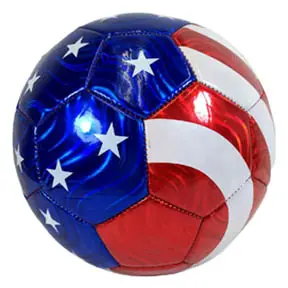How much does your soccer ball weigh
(What's the Weight of soccer balls for youth soccer)
You're wondering how much does a soccer ball weigh. This article will help you understand the weight of the different sized balls for youth soccer.
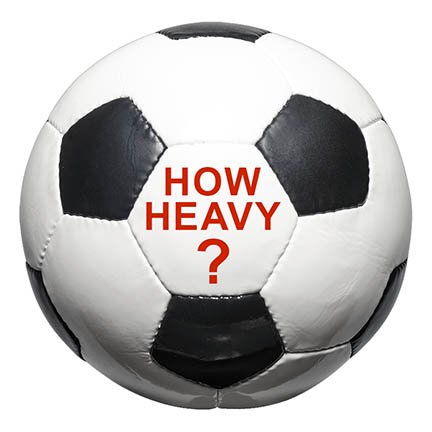
YOUTH SOCCER BALL WEIGHT
| SIZE | WEIGHT | |
| 3 | 11-12 Ounces | |
| 4 | 12-13 Ounces | |
| 5 | 14-16 Ounces |
SOCCER BALL WEIGHT DEPENDS ON MATERIAL USED
Each of the 3 officially sized soccer balls has a narrow required weight range that must be adhered to in order for them to be acceptable as game balls. Size 3 balls should weigh between 11 and 12 ounces. Moving up to a size 4 ball, the weight should be between 12 and 13 ounces. The largest standard size is a size 5 soccer ball and it should come in with a weight between 14 and 16 ounces.
soccer ball weight comparison
Okay, now let's take a look at the different weights for each soccer ball size, in both English and metric measurements To put in perspective for you, we'll also compare the different soccer ball weights to other common objects.
how much does a size 2 soccer ball weigh
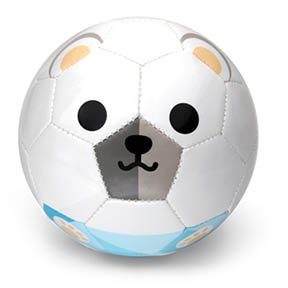 Toddler Soccer Ball Weighs 6.5 OZ.
Toddler Soccer Ball Weighs 6.5 OZ.Because it's not an officially recognized soccer ball size, you'll find more than the usual amount of variation in the weight of size 2 balls. There are no US Youth Soccer or FIFA regulations regarding soccer balls that are smaller and lighter than the regulation size 3 balls.
I had to research this size ball weight to give you an accurate answer to how heavy they are and this is what I found out for you about this very lightweight soccer ball. Size 2 balls range between 6.5 and 8.5 ounces, or between 184 grams and 241 grams
In rough terms, a size 2 youth soccer ball weighs about one-third as much as a basketball. That's also about the same weight of a cup of water, and just a little bit more weight than a softball has.
how much does a size 3 soccer ball weigh
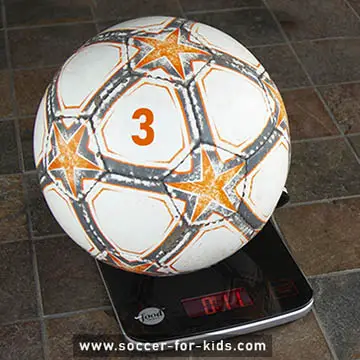 Size 3 Soccer Ball Weighs 11 OZ.
Size 3 Soccer Ball Weighs 11 OZ.A size 3 soccer ball weighs about the same as a human heart. That's about 3/4 of the weight of a regulation size 5 soccer ball. In metric measurement a size 3 ball weight 312-340 grams
The difference between the weight of a size 3 soccer ball for U8 players doesn't look like much it actually is, Full size soccer balls are about % heavier than a younger child's soccer ball.
I confirmed that the weight of one of my size 3 soccer balls didn't change much over the many years that I've coached with it. I weighed it on my wife's kitchen scale and it came it right at 11 ounces.
how much does a size 4 soccer ball weigh
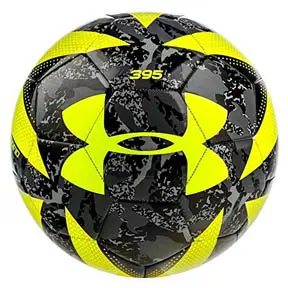 3/4 LB. - Size 4 Soccer Ball
3/4 LB. - Size 4 Soccer BallA size 4 soccer ball should weigh between 340 and 369 grams. That's between 12 and 13 ounces, which is 3/4 of a pound. You could compare it to be about as heavy as a can of soup. That's also the same weight as a Kindle Fire HD 8.
Despite the apparent big size difference, size 4 balls are only slightly heavier than size 3 balls-surprisingly only about 1 ounce heavier-and are slightly lighter than size 5 soccer balls.
how much does a size 5 soccer ball weigh
It's about two times as heavy as a Hamster. Another way you say it is that a size 5 soccer balls weighs the same as 2 adult hamsters weigh. The average adult hamster has a typical weight of about 7-8 ounces.
Size 5 soccer balls weigh between 397 and 454 grams. A pound is exactly 453.592 grams, so a size 5 soccer ball is a pound at the heaviest and 7/8 pound at its lightest.
how much does a world cup soccer ball weigh
The soccer balls used for the World Cup games are heavily monitored. There is so much at stake that the weights of the balls chosen are carefully scrutinized at a very high level.
A soccer ball that is too heavy or too light can detract from the level of play during the game. Just like the size 5 balls used for the older kids who play youth soccer, these soccer balls must weigh between 14 and 16 ounces.
how much DO HEAVY duty soccer balls weigh
Simply put, there are heavy duty soccer balls that are not used in official games and can weigh more than a regulation soccer ball. The regulations on the size and weight keep the ball consistent so that the players can develop a consistent level of play.
Every component that goes into the manufacturing of the soccer ball affect its weight. that includes the type of bladder on the inside, the material and thickness of one or more liners, the covering on the outside, as well as the stitches that hold the panels together.
The number of panels will also affect how heavy the soccer ball is too. A 32 panel ball was developed in 1962, but was overcome by a 24 panel design, and a 42 panel design, early after the turn of this century. Heavy duty soccer balls may use multiple lining layers, heavier outside covers, extra thick stitching and thicker bladders.
As an Amazon associate, soccer-for-kids receives a small commission for qualifying purchases. There is no cost to you. Zero!
Inspire a child. Keep it positive. Keep it fun!

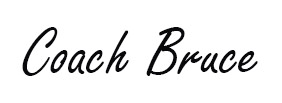
Soccer coach Bruce Lovelace started playing soccer in 1974 when, as a young boy, he constructed his own makeshift soccer goal. He played in high school, then in college and beyond. He started to coach his own children in the 1990s and then ran a Soccer Shots franchise for 12 years. Now, Coach Bruce publishes the soccer-for-kids.com website. Find out more about youth soccer coach Bruce Lovelace and what inspires this website.
Soccer-for-kids.com is a participant in the Amazon Services LLC Associates Program, an affiliate advertising program designed to provide a means for sites to earn advertising fees by advertising and linking to Amazon.com
